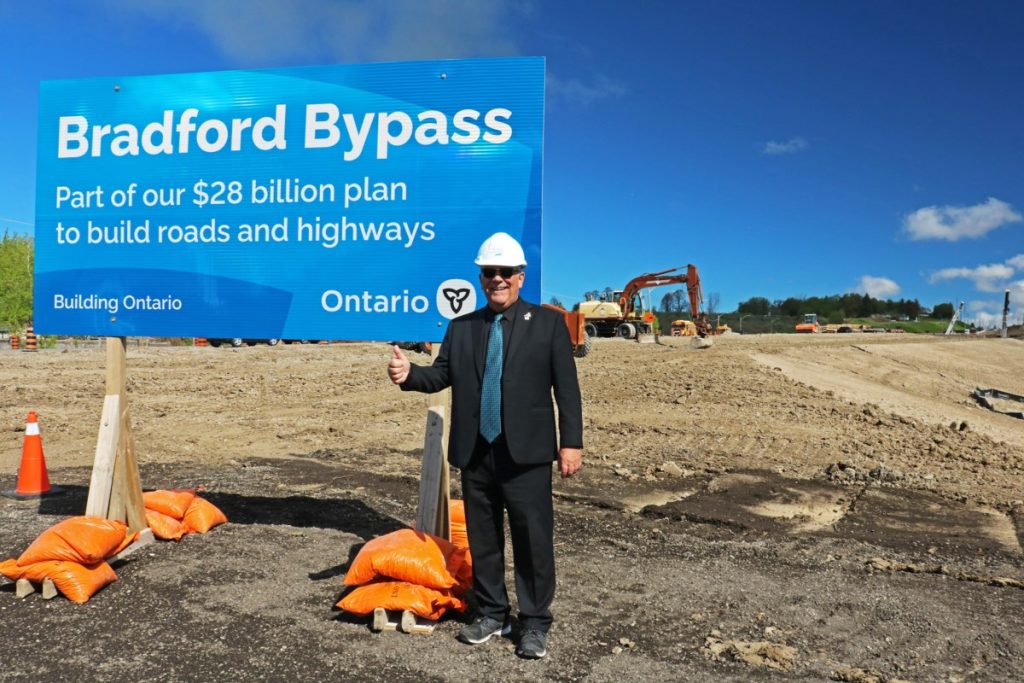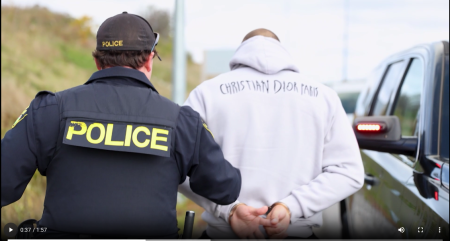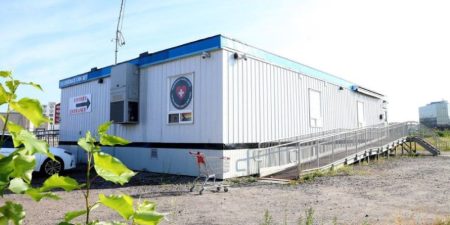Rescue Lake Simcoe Coalition calls challenge ‘loopy, unplanned’; ‘Healthcare Not Highways’ rallies held throughout Ontario over the weekend
NEWS RELEASE
RESCUE LAKE SIMCOE COALITION
************************
Individuals driving by the province’s Bradford Bypass indicators and the underpass being constructed north of Bradford might imagine the freeway is a fait accompli. Its critics produce other concepts. The Bradford Bypass’ background research are full, however questions stay, and quite a few vital authorizations haven’t but been granted. As rash new concepts spring forth from the Ministry of Transportation (MTO) and the Premier’s workplace, “we want to remind people that actually this project is also in the ‘crazy, unplanned, but promised highways’ bucket,” says Rescue Lake Simcoe Coalition’s (RLSC) Government Director, Claire Malcolmson.
Early in September RLSC obtained digital billboards up in Bradford and Keswick to remind folks that the struggle is just not over. Over the weekend of September 14 – 15, eight “Healthcare Not Highways” rallies have been held throughout Ontario, together with Newmarket and Barrie. “There were a lot more supportive honks than we anticipated,” says Melanie Duckett Wilson, one of many protest organizers. “People are fed up with the province wasting our money while healthcare withers on the vine.”
How a lot blind spending ought to taxpayers settle for? There are vital variations between official price estimates, from the province’s $800 million to the Auditor Common’s $2 – 4 BILLION. “This makes it one of the most expensive highways ever built at ¼ billion per kilometer,” says Margaret Prophet, the Government Director of Simcoe County Greenbelt Coalition. “No one asked for the most expensive highway. They just want to get to work faster,” she added.
Of specific significance to the environmental and the angling neighborhood is the excellent authorization from the Fisheries and Oceans Canada (DFO) for potential hurt to fish and fish habitat. The RLSC has requested the federal company to proactively request the province’s fisheries research. However regardless of apparent hurt to fish and fish habitat and potential contraventions beneath the Fisheries Act, the province has not made significant steps to guard fisheries. As an alternative they’re going to wait to see if Canada takes any steps in direction of implementing the Fisheries Act.
“From our perspective, a project of this scale will inevitably cause some harm to the local fisheries and potentially beyond. Therefore, at the very least, Ontario must apply for a Request for Review” says Adam Weir, Fisheries Biologist for the Ontario Federation of Anglers and Hunters. “We hope this will eventually lead to better conservation of the impacted waterways.”
Along with fish habitat, there are some endangered species and vital migratory birds and their habitats that must be protected by federal and provincial legislations. Residents are looking for nest places to make sure the suitable locations are protected.
“Again we ask “Who is looking after Lake Simcoe?”” says Malcolmson. “Lake Simcoe is a priority watershed; groups and agencies are getting Federal money for works that reduce phosphorus loads as we speak. It would be more fiscally and environmentally efficient to stop damaging projects, and to follow the Lake Simcoe Protection Plan, which says new infrastructure projects such as the Bradford Bypass are only permitted if it has been determined that there is no reasonable alternative.”
That’s the difficulty – Ontario hasn’t checked out an alternative choice to this specific route in additional than 20 years. Very long time opponent Invoice Foster, of Forbid Roads Over Greenspaces, explains: “The original purpose of this 4 lane highway was to connect long distance traffic between provincial highways. Local traffic was not MTO’s responsibility; it was the responsibility of local / regional governments. We are now looking at an 8 lane, 16 km highway with 7 interchanges. Its primary purpose is now to serve local, sprawl related traffic, which would be better served by two separate Arterial and Regional Road connections over the Holland River. Neither of these have ever been studied in this context. There is no compelling reason for this highway which is projected to be gridlocked within 10 – 30 years.”
Ontario’s place is that they are going to determine learn how to construct an elevated freeway over a extremely delicate river valley it doesn’t matter what. That path goes over First Nations ancestors that have been buried on the Decrease Touchdown, a big cultural website utilized by Indigenous peoples for time immemorial in addition to early explorers and settlers. Engagement with First Nations hasn’t been accomplished. That is an ongoing theme skilled throughout Ontario with different comparable initiatives.
Ontario’s (MTO) has awarded a contract to design the western portion of the Bypass, between Freeway 400 and Yonge Road. Critics name this “piecemealing”, cautioning that Ontario is being fiscally irresponsible by spending cash with out figuring out the way it will construct an elevated freeway over two Branches of the Holland River, or what it can price. Usually, your entire challenge is evaluated previous to initiating growth to make sure its feasibility and that environmental components are accounted for and adequately thought of early on within the course of.
Certainly, in 2021, the Ontario Skilled Society of Engineers (OPSE) said their place: “strongly opposing the proposed highway projects, specifically Highway 413 and the Bradford Bypass, based on feedback from Ontario’s engineering community.” MTO responded, citing a dedication to do new research. Their response didn’t nonetheless decide to evidence-based decision-making, or to making sure that Ontarians’ tax {dollars} are spent on sustainable and price efficient initiatives. The MTO doesn’t conform to the OPSE’s suggestion that development mustn’t begin and not using a correct updated, Environmental Evaluation in place.
The teams opposing the Bradford Bypass urge individuals to inform their elected representatives to spend taxpayer cash on cost-effective initiatives that may cut back our reliance on fossil fuels, single occupancy automobile use, and that may help, not hurt, the atmosphere. 1750 individuals have signed a petition that asks for a price for cash audits for this challenge, and advises the province to put money into transit enhancements and regional street expansions if the audits justify it.
As an alternative of utilizing conservative warning, the province is spending cash hand over fist on a challenge we don’t know is possible and with appreciable uncertainty associated to its impression on the atmosphere. That’s why Gord Miller, former Environmental Commissioner of Ontario known as Ontario’s strategy to constructing the Bradford Bypass a “gross violation of international standards.”
************************









